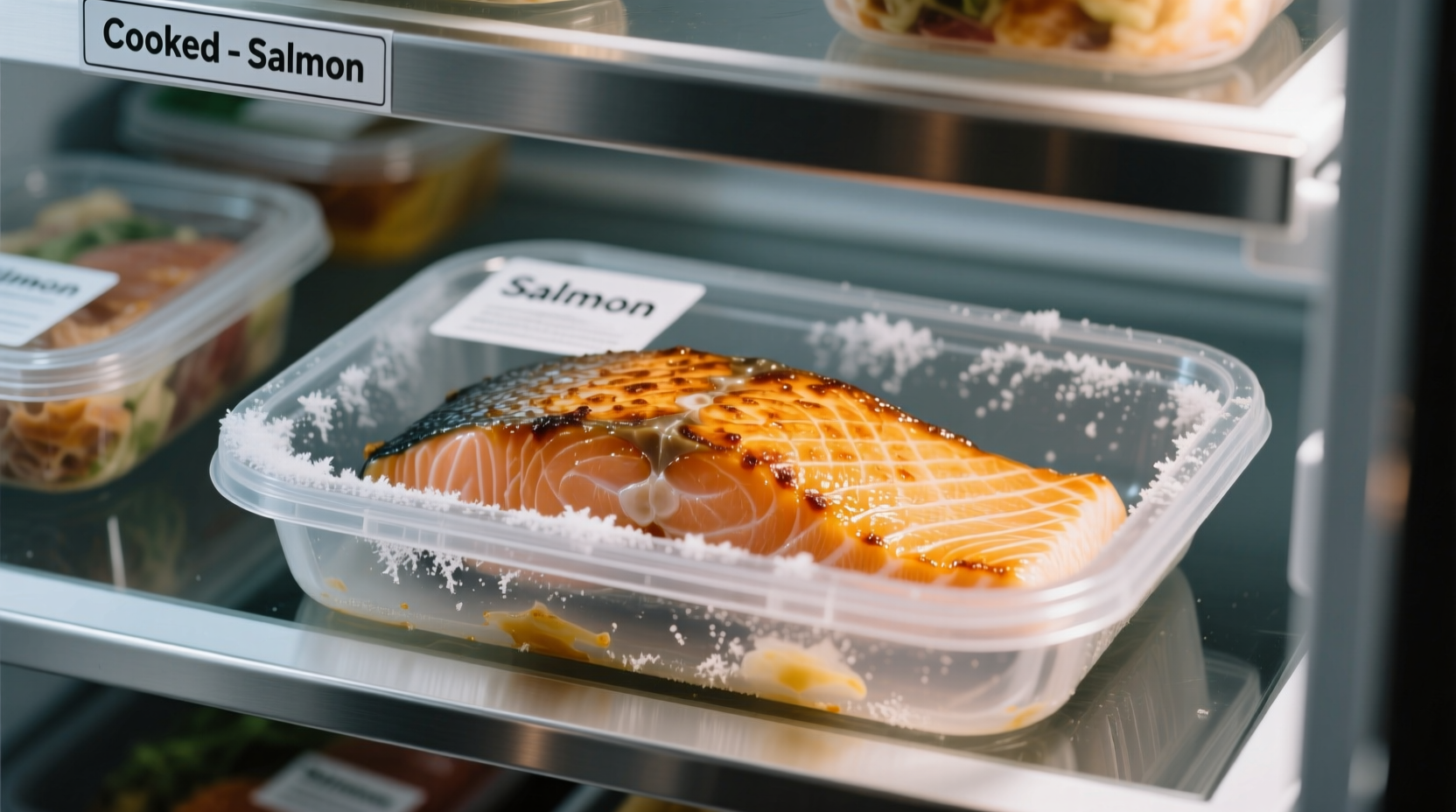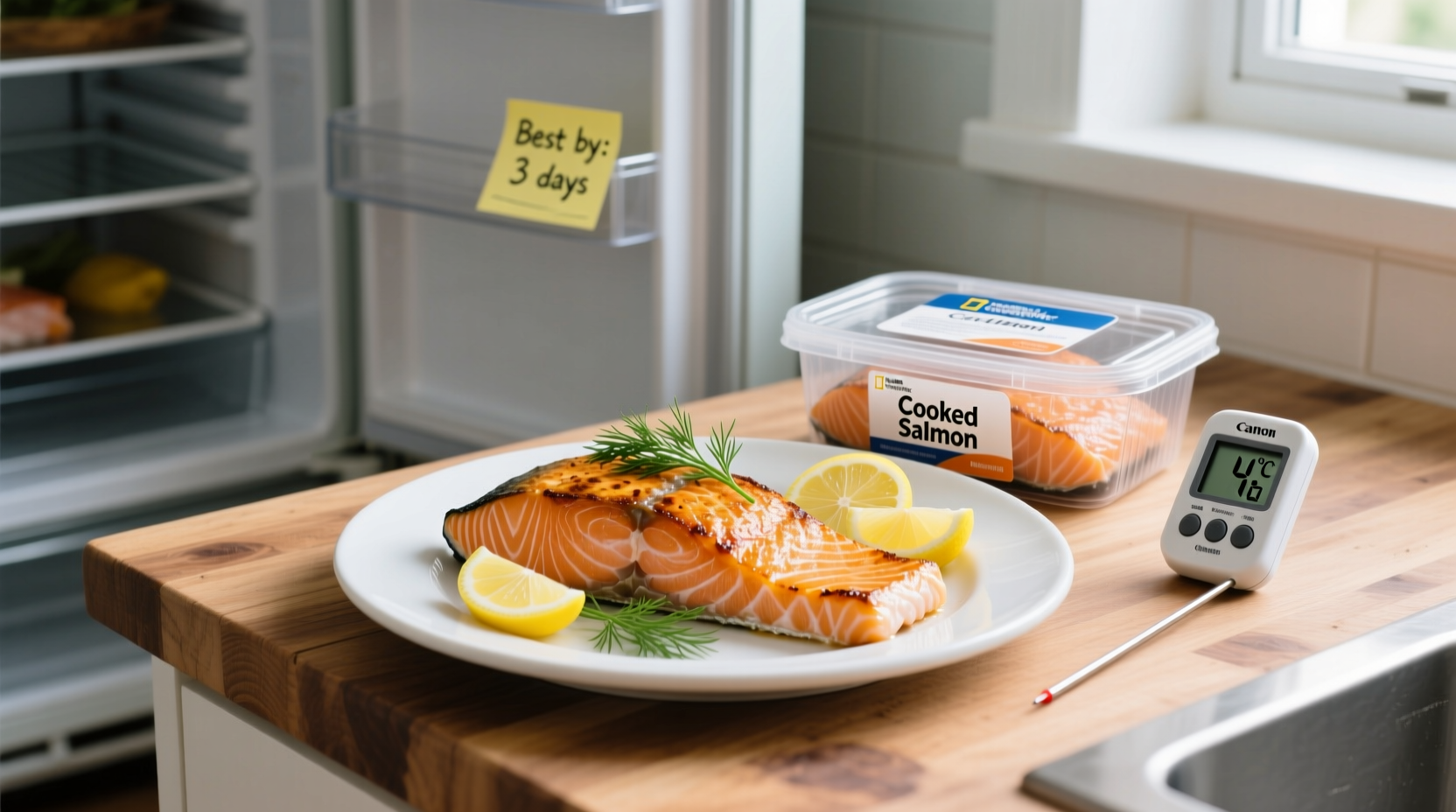Nothing beats the rich flavor of perfectly cooked salmon, but what happens when you've prepared more than you can eat in one sitting? Understanding how long cooked salmon remains safe in your refrigerator isn't just about avoiding waste—it's crucial for preventing foodborne illness. As someone who's worked in professional kitchens for over 15 years, I've seen too many people make dangerous assumptions about seafood leftovers.
The Science Behind Seafood Safety
Unlike other proteins, fish spoils faster due to its delicate structure and high moisture content. When salmon is cooked, it enters the temperature danger zone (40°F-140°F) where bacteria multiply rapidly. The USDA Food Safety and Inspection Service confirms that cooked fish, including salmon, maintains safety for only 3-4 days under proper refrigeration.
Here's what happens during those critical days:
| Storage Day | Bacterial Growth | Sensory Indicators |
|---|---|---|
| Day 1 | Minimal growth | Fresh appearance, mild ocean scent |
| Day 2-3 | Moderate growth | Slightly stronger odor, texture begins firming |
| Day 4 | Rapid multiplication | Pronounced sour smell, slimy texture |
| Day 5+ | Dangerous levels | Strong ammonia odor, discoloration |
This timeline comes from research conducted by the FDA Food Code and verified by university extension programs across the United States. Temperature fluctuations in home refrigerators often accelerate this process, making strict adherence to the 4-day rule essential.
Maximizing Freshness: Your Storage Checklist
How you store your cooked salmon determines whether it reaches the full 4-day window. Follow these professional kitchen-tested methods:
- Cool rapidly—Transfer cooked salmon to shallow containers within 2 hours of cooking. The FDA recommends cooling food from 140°F to 70°F within 2 hours, then to 40°F within the next 4 hours.
- Air-tight containers—Use glass or BPA-free plastic containers with tight seals. Vacuum sealing extends freshness by reducing oxygen exposure.
- Temperature verification—Place an appliance thermometer in your refrigerator to ensure it maintains 40°F or below. Most home units run warmer than their settings indicate.
- Strategic placement—Store salmon on middle shelves where temperatures remain most consistent, never in the door where frequent opening causes fluctuations.

Spoilage Detection: Beyond the Calendar
While the 3-4 day rule provides a safety baseline, always perform these sensory checks before consuming leftovers:
Smell Test
Fresh cooked salmon has a mild, ocean-like aroma. Discard immediately if you detect:
- Strong ammonia or sour odors
- Vinegar-like acidity
- Any unpleasant "off" smells
Texture Assessment
Gently press the surface with a clean utensil:
- Safe salmon feels firm with slight spring-back
- Danger signs include slimy film, mushiness, or dry, flaky texture
Visual Inspection
Examine under good lighting for:
- Discoloration (grayish tinge or dark spots)
- Mold growth (fuzzy white, green, or black patches)
- Excessive liquid pooling in container
When in doubt, throw it out. The USDA Food Safety and Inspection Service emphasizes that no amount of reheating eliminates toxins produced by certain bacteria once they've reached dangerous levels.
Special Considerations for Different Preparations
Cooked salmon's shelf life varies based on preparation method and additional ingredients:
- Plain grilled/baked salmon—Lasts full 3-4 days when properly stored
- With sauces or marinades—Reduce window to 2-3 days as dairy or acidic components accelerate spoilage
- Mixed dishes (salads, casseroles)—Follow the shortest shelf life of any ingredient (typically 3 days)
- Restaurant leftovers—Assume unknown preparation conditions; consume within 2 days
According to research from the National Center for Home Food Preservation, the presence of garlic, onions, or citrus in marinades can slightly extend freshness by creating an acidic environment that inhibits bacterial growth—but never beyond the 4-day maximum.
Extending Your Salmon's Life Safely
Need to keep your cooked salmon longer than 4 days? Freezing provides a safe solution:
- Portion control—Divide into single-serving sizes before freezing
- Double protection—Wrap tightly in plastic wrap, then place in freezer bags with air removed
- Label clearly—Include date and contents (cooked salmon maintains best quality for 4 months)
- Thawing method—Refrigerate overnight or use cold water method (never room temperature)
When reheating, ensure internal temperature reaches 145°F as measured by a food thermometer. The FDA Food Code specifies that properly frozen cooked salmon retains safety indefinitely, though quality diminishes after 4 months.
When Food Safety Meets Sustainability
Wasting food impacts both your wallet and the environment. By following these precise storage guidelines, you'll reduce food waste while protecting your health. The Environmental Protection Agency estimates that 30-40% of the food supply gets wasted, with seafood being among the most frequently discarded items due to improper storage knowledge.











 浙公网安备
33010002000092号
浙公网安备
33010002000092号 浙B2-20120091-4
浙B2-20120091-4